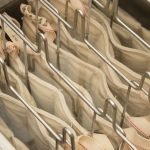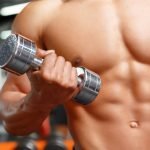Homeopathic Treatment for Chronic Knee Pain
Joe Kellerstein, DC, ND
Teaching is, without question, the best way to learn. About once a month I conduct a live clinic where students observe my case-taking and follow-up technique. It really is a unique opportunity to practice self-criticism out loud and tune up sloppy questioning habits that can occur in private practice.
Good homeopathic interrogation entails helping the patient create the linguistic distinctions that accurately portray his or her experience of suffering. It feels like a sculpting process, where we coach the client in rendering a likeness we both can examine and work with. It is quite thrilling to watch a remedy picture emerge with the slightest of coaxing. It is even more intriguing as we observe change in these patterns through the tortuous course of cure.
Case Study
Sujit is a 50-year-old warehouse manager. His chief complaint was diagnosed by another physician as osteoarthritis of the knee (left). Physiotherapy and the usual tour of anti-inflammatory drugs provided only passing benefit, and he seemed reluctant to rely on them long-term. His family in India was used to seeing a homeopath for health concerns, so he came to the school clinic for assistance.
Physical exam of the knee showed restricted flexion and tenderness expressed at the extremes of rotational and lateral joint play. There was moderate swelling of the knee area, but no heat or discoloration. Gait appeared normal.
Sujit’s problem was some 10 years old. After a period of worry due to financial concerns, he noticed becoming chillier in general but especially so in his feet. He had the sense that his feet needed to be carefully kept warm. In fact, when his feet actually did get ‘chilled,’ he felt generally unwell as before a flu, and there developed a sharp pain below the patella, extending down through the tibia as if deep in the bone. Once activated, the pain was worse walking and worse with prolonged sitting. This was very troublesome at work, which involved a fair amount of walking. Attacks of this kind could last up to one week following exposure of the feet to cold, especially cold damp. The knee itself was fine in the cold, as was the rest of him, although it was not his favorite temperature state.
While exploring the panel of questions to do with general climatic response, it was interesting to note a very striking perspiration symptom. On falling asleep, Sujit would generate quite a bit of sweat from the head. Not during sleep so much but actually in the process of drifting off did the bulk of moisture seem to flow. This is a gem of a homeopathic symptom, and falls beautifully in line with the rest of the case.
Further questioning revealed that Sujit was chilly on initially going to bed, but soon wanted to uncover – but he dare not uncover his feet for fear of their becoming chilled.
This last point is notable. The homeopathic pattern seemed obviously Calc. Carb. Typically, Calcarea shows the chilliness on going to bed, followed soon by warming up and the desire to uncover, especially the feet. Von Keller, a German homeopath of this century, gives as one of his distinctions between this remedy and its first cousin Silicea that the latter will remain cold and need to keep their feet covered all night. Both remedies have the sensitivity to cold and both also will sweat on falling off to sleep. On reading for the precise pains in the lower limb in Hering’s Guiding Symptoms, I was no closer to a decision. Finally, reasoning that because Sujit did warm generally after being in bed, I first used a single dose of Calcarea carbonica 200C. It worked quickly and well, giving a 60%-70% improvement for the knee, but no change in the perspiration on falling asleep.
Calc. was used several times over the next three months, with clear improvement each time. Then a relapse occurred that did not respond to the Calc., and this time the remaining symptoms did in fact point to Silicea, which helped but only for about one month; and for the last few months, we were back to Calcarea, with improvement in the perspiration, finally.
 Joe Kellerstein, DC, ND graduated as a chiropractor in 1980 and as a naturopath in 1984. He graduated with a specialty in homeopathy from the Canadian Academy for Homeopathy, and subsequently lectured there for two years. He also lectured in homeopathy for several years at the Canadian College of Naturopathic Medicine; for eight years at the Toronto School of Homeopathic Medicine; for two years at the British Institute for Homeopathy; and for the past five years, he has lectured for his own post-grad course in homeopathy, Homeopathy by the Book (homeopathybythebook.com). Kellerstein’s mission is the exploration of natural medicine in a holistic context, especially homeopathy and facilitating the experience of healing in clients.
Joe Kellerstein, DC, ND graduated as a chiropractor in 1980 and as a naturopath in 1984. He graduated with a specialty in homeopathy from the Canadian Academy for Homeopathy, and subsequently lectured there for two years. He also lectured in homeopathy for several years at the Canadian College of Naturopathic Medicine; for eight years at the Toronto School of Homeopathic Medicine; for two years at the British Institute for Homeopathy; and for the past five years, he has lectured for his own post-grad course in homeopathy, Homeopathy by the Book (homeopathybythebook.com). Kellerstein’s mission is the exploration of natural medicine in a holistic context, especially homeopathy and facilitating the experience of healing in clients.









